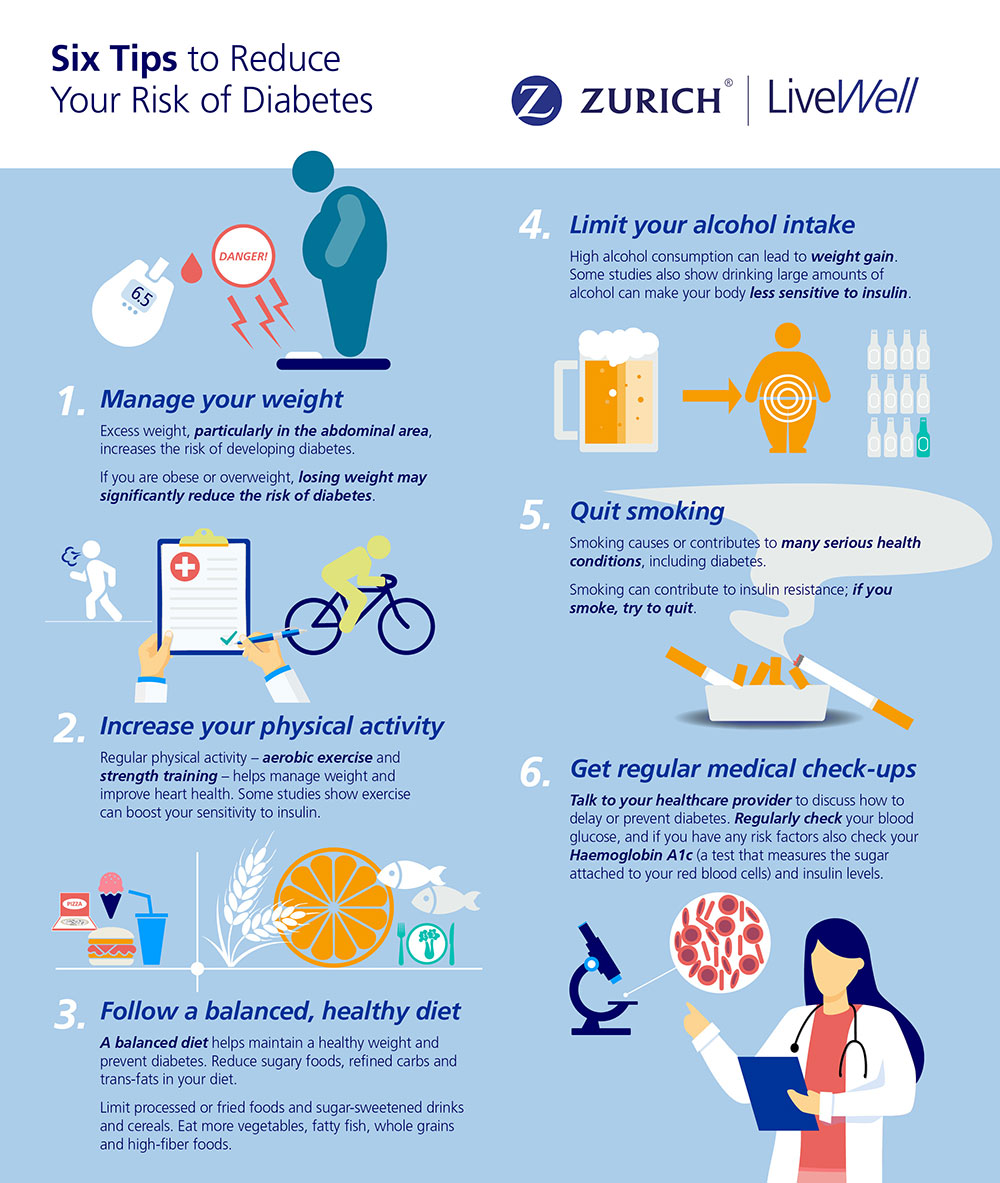Diabetes and You
WellbeingArticleNovember 13, 20203 min read
Diabetes is steadily rising in prevalence globally. Dr. Sally Philips, Zurich LiveWell, explains why you should take diabetes seriously and what can be done to prevent the condition
Diabetes can be a deadly serious condition. It occurs when your blood glucose (or blood sugar) is too high and without ongoing, careful management, this can result in damage to the heart, blood vessels, eyes, kidneys and nerves.
Blood glucose is our body’s main source of energy. Insulin, a hormone made by the pancreas, acts like a key to let glucose from the food we eat pass from the blood stream into the cells in the body to produce energy.
But people diagnosed with diabetes are either unable to produce enough insulin, or the body becomes resistant to insulin. This can lead to many health complications and increase the risk of dying prematurely. According to the World Health Organization, 1.6 million deaths are directly attributed to diabetes each year.
A preventable condition
The good news is that type 2 diabetes, which accounts for 90 percent of all diagnosed cases, is preventable – although this has not stopped its prevalence from steadily rising. The WHO estimates 422 million people worldwide have diabetes.
There are various risk factors associated with the development of type 2 diabetes, particularly obesity and a poor diet. But these risks can also be mitigated.
Through a growing base of medical research, we now understand that type 2 diabetes is a manageable and even reversible condition rather than a chronic, progressive disease. It means for those with type 2 diabetes, the need for long-term medication can be reduced or even eliminated with an improved diet, effective weight management, exercise and healthy lifestyle.
Prediabetes
Many people live with prediabetes, which does not usually have any signs or symptoms. This is when blood glucose levels are above the normal range, but not high enough to be diagnosed as diabetes.
Early signs that suggest you have moved from prediabetes to type 2 diabetes include excess hunger, increased thirst, frequent urination, fatigue, and blurred vision.
The starting point for living well with diabetes is an early diagnosis – the longer a person lives with undiagnosed and untreated diabetes, the worse their health outcomes are likely to be.
Remember, type 2 diabetes is preventable and even progression from prediabetes to diabetes is not inevitable. Follow these six tips to reduce your risk of diabetes:


